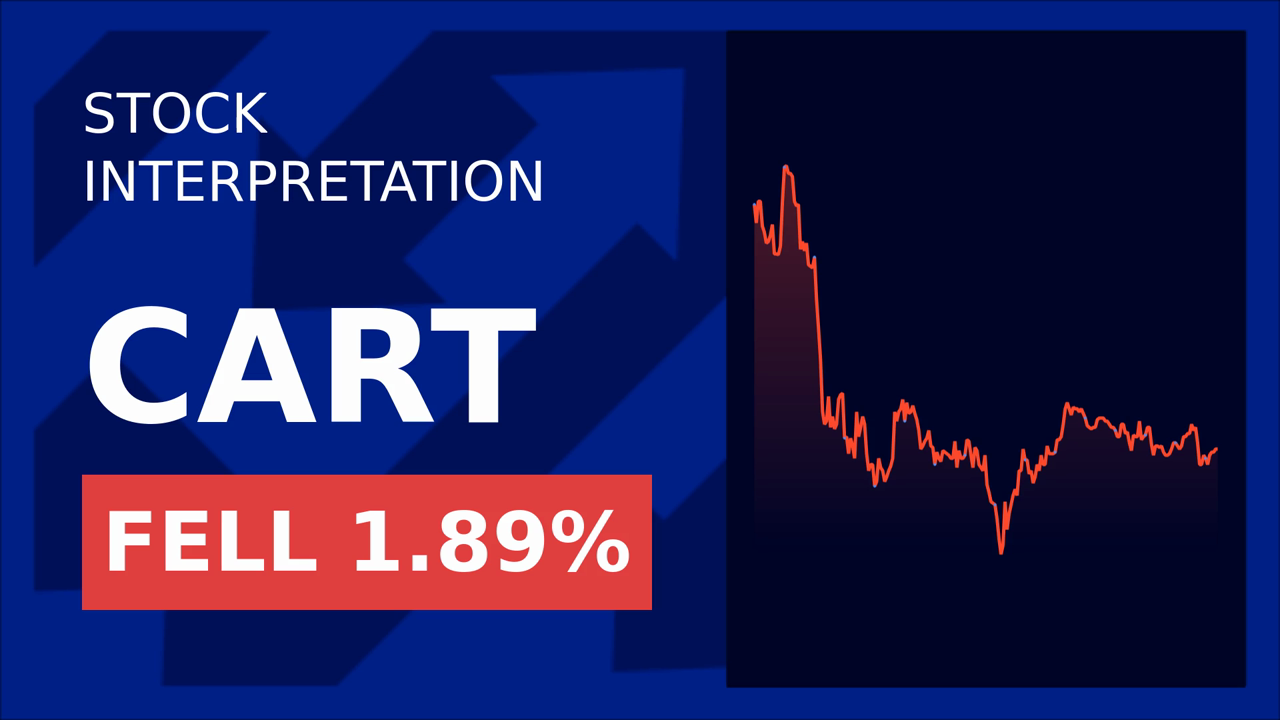Maplebear Inc. (CART): The Surge and Subsequent Decline on April 25, 2025
On Friday, April 25, 2025, Maplebear Inc. (NASDAQ:CART) shares skyrocketed by 13.6%, reaching a midday high of $45.22—a sharp rebound from its previous close of $41.91. Trading volume surged to 12.36 million shares, nearly triple the daily average, signaling heightened investor interest. This dramatic move contrasted with the stock’s subsequent dip on April 26, when it fell 0.6% to $41.66. To understand this volatility, we must dissect the factors driving both the surge and the subsequent retreat.

The Catalyst for the Friday Surge
The April 25 rally appeared to defy conventional logic given the analyst downgrade that occurred earlier in the month. Stifel Nicolaus had lowered its price target from $57.00 to $54.00 on April 23, yet maintained a "buy" rating. This nuanced adjustment—reducing expectations while reaffirming optimism—may have reassured investors that Maplebear’s long-term growth story remained intact.
Additionally, the stock’s Momentum Score of 67 (graded "Strong") as of April 25 suggested technical support for the uptick. Traders often interpret such metrics as a buy signal, especially when paired with high volume. The surge could also reflect a short-covering rally: investors exiting bearish positions ahead of positive news or a potential earnings beat.
Underlying Challenges
Despite the Friday surge, Maplebear faced headwinds that would soon resurface:
1. Valuation Concerns: The stock’s P/E ratio of 26.5 exceeded the industry median of 23.9, earning it a "D" grade from AAII’s Value Score. This indicated overvaluation relative to peers, making the stock vulnerable to profit-taking.
2. Analyst Sentiment: While the consensus rating was "Moderate Buy," the downgrade on April 23 highlighted skepticism about its ability to sustain growth. A 5.15% decline by April 28 underscored these concerns.
3. Operational Risks: Worker strikes and execution risks tied to its Wynshop acquisition loomed as potential drags on profitability.
The Decline on April 26 and Broader Context
The next-day drop of 0.6%—and the subsequent 5.15% slide by April 28—reflected a broader reassessment of Maplebear’s fundamentals. Key factors included:
- Downgrade Aftermath: The April 23 analyst action, while initially shrugged off, likely pressured investors to take profits amid valuation fears.
- Earnings Pressure: Despite Q1 revenue meeting estimates ($897M), the $0.37 EPS narrowly missed forecasts, hinting at margin pressures. Investors may have anticipated this, selling ahead of the May 1 earnings report.
- Technical Indicators: The stock’s 50-day moving average of $40.17 acted as a resistance level, while its 200-day average of $43.44 suggested longer-term bearishness.
Why the Friday Rally Was an Anomaly
The April 25 surge was less about fundamentals than short-term trading dynamics:
- Momentum Chasing: Traders exploited the stock’s "Strong" momentum grade, pushing prices higher despite overvaluation.
- Sentiment Shifts: The downgrade’s "buy" retention and institutional buying (e.g., Candlestick Capital’s Q4 stake increase) may have fueled optimism temporarily.
However, these factors were insufficient to override valuation and execution risks, leading to the April 28 decline to $39.75.
Conclusion: A Volatile Narrative
Maplebear’s April 25 surge and subsequent decline illustrate the tension between short-term momentum and long-term valuation. While the stock’s 13.6% jump on Friday captured attention, its year-to-date decline of 4.03% and P/E premium suggest investors should proceed with caution.
Key takeaways for investors:
- Technical Bounces vs. Fundamentals: The rally was a technical rebound, not a fundamental shift. The P/E ratio of 26.5 remains a red flag compared to the industry median.
- Analyst Consensus: The "Moderate Buy" rating with a $50.61 target implies upside potential, but execution risks (e.g., strikes, integration of Wynshop) could limit gains.
- Earnings Clarity: The May 1 report, showing revenue growth but margin pressures, underscores the need for sustained operational improvements to justify the stock’s premium.
For now, Maplebear remains a high-risk, high-reward bet, suitable only for investors willing to tolerate volatility. The road to $50.61 will require more than short-term momentum—it demands proof that overvaluation is justified by sustained profitability.










